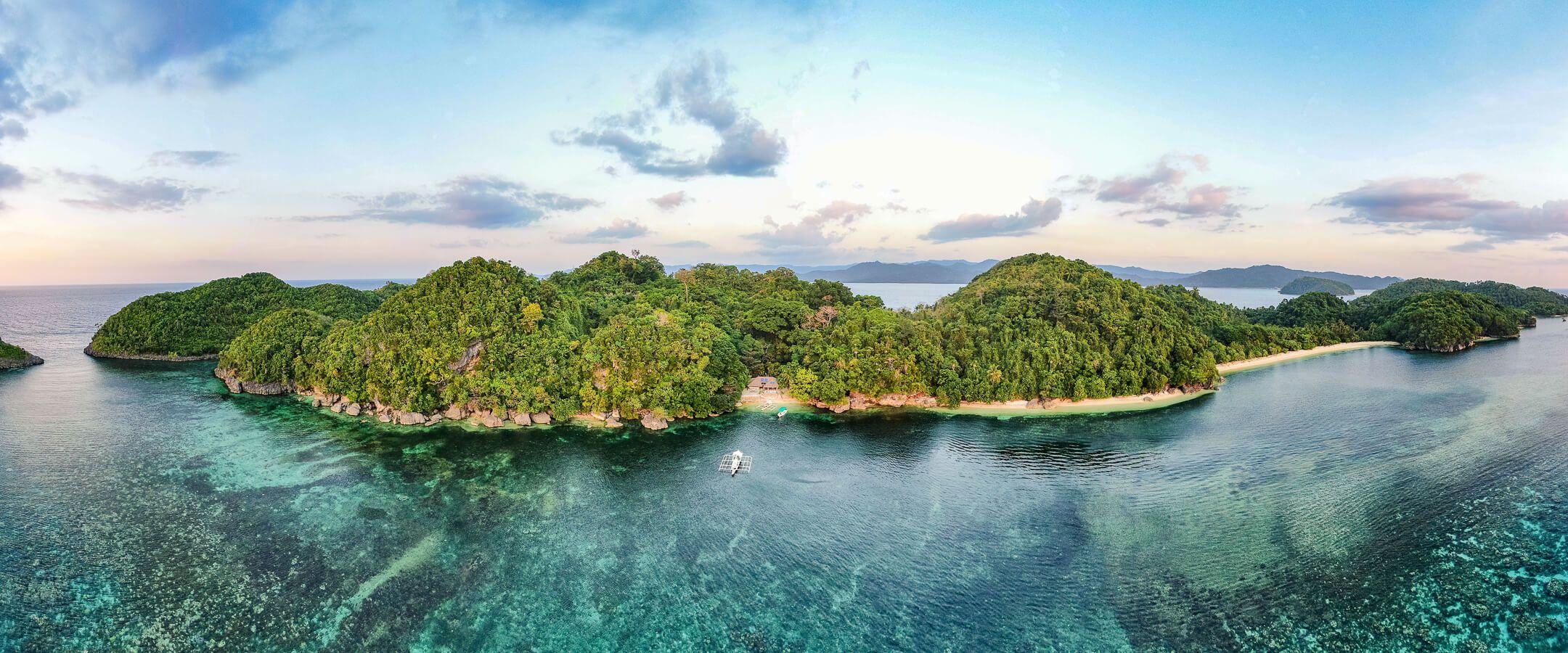Wisdom Walks This Land
Deep in the deserts of Western Australia, the Martu people have maintained an unbroken connection to their land for thousands of years. Today, the community organisation Kanyirninpa Jukurrpa (KJ) uses Indigenous wisdom to address modern conservation challenges and create pathways for young people to protect their culture and home.
A helicopter hovers over the vast Australian desert as an elderly Martu woman directs the pilot, using memory and traditional songs. She's searching for a waterhole – one the woman hasn't seen since she walked this land as a child, yet she knows exactly what she's looking for: an acacia tree near a specific rocky outcrop, a marker of life-giving water in this endless landscape of red earth and blue sky.
An Aboriginal group from Western Australia, the Martu people are deeply connected to the desert. The organisation Kanyirninpa Jukurrpa (KJ) is a community empowerment project created by the Martu, who are committed to protecting and preserving their cultural heritage and environment.
The Martu's videos of the landscape are awe-inspiring. Deserts, bushland, and even wetlands extend toward the horizon. For the Martu, going ‘on Country’ is everything.
“All the future generations should be working to look after Country,” says Muuki Taylor, OAM Senior Cultural Advisor.
“Through Kanyirninpa Jukurrpa, Martu have mapped over 1,500 different water sources,” says KJ Executive Director Zan King. “It's a beautiful way of blending traditional knowledge with Western science.” This profound wisdom has shaped her 15-year journey with KJ.
For thousands of years, this endless desert landscape has been shaped by Martu wisdom - now, through KJ, that knowledge is helping to forge a new future for both the land and its people.
Return to Country
Before finding her calling in the Australian desert, Zan's work with remote communities took her from teaching in Northern Queensland to a tiny Dusun village in Borneo. There, she helped build and run a community school.
On returning to Australia, her path led to an unexpected opportunity with KJ.
“I fell in love with the Martu people and the organisation,” Zan says. “Martu are incredibly warm and welcoming people. They are happy to share their rich culture and profound connection to the country. With respect and genuine interest, you can learn so much from their wisdom and insights.”
“When you first step onto Martu Country, you feel this breathtaking vastness,” Zan shares. “You go from sand dunes to salt lakes to rugged outcrops to clay pans.” After the winter rains, the land comes alive with wildflowers painting the desert in magical colours. “And when the night falls, you get blown away by the night sky. It is just these amazing stars that light up the whole landscape.”
Founded in 2005, KJ works alongside the Martu people, the traditional owners of a 13.6 million-hectare expanse across Western Australia's remote Pilbara region. From those early days with just five non-Martu staff and 20-50 Martu people, KJ has grown to employ 524 Martu across four communities. Known as the Western Desert, this land holds both profound cultural heritage and environmental significance.
The Martu story is remarkable. The Martu were one of Australia's last Indigenous groups to make contact with European settlers. “Many Australians don't know that Martu lived a traditional lifestyle until the 1940s to the 1960s,” Zan notes. After being brought into missions, many made the courageous decision in the 1980s to return to their homeland. “They got a truck and supplies and drove back out to the desert. They set up their own communities and were determined to go home as part of the homelands movement, rebuilding despite the challenges they still face.”
“Coming out Country makes you feel good,” reflects Martu Nurai Jadai. “You open your mind and your heart, and you reset again in your spirit.”
Coming out Country makes you feel good. You open your mind and your heart, and you reset again in your spirit.
Keeping Culture Strong
Today, the Martu community faces significant challenges. Western influence has impacted their way of life, resulting in a median age of death of just 39. Through KJ’s integrated programmes, such as the Cultural Programme, Women and Families, and Martu Leadership Programme, community members navigate contemporary worlds while maintaining their essential connections to culture and Country.
At the heart of Martu society lies a sophisticated system of kinship that guides everything from marriage to knowledge transmission. Four distinct groups form a complex web of relationships determining who can marry whom, how knowledge is passed down, and even how people interact - from jovial relationships between grandparents and grandchildren to strict avoidance protocols between mothers-in-law and sons-in-law.
This sense of belonging extends to everyone who works with the Martu. When Zan's infant daughter was six months old, she received a traditional smoking ceremony welcoming her into the community, offering a firsthand glimpse into how Martu culture nurtures connections. “It was so special,” Zan reflects. “It was this amazing moment of feeling we were part of an extended family.”
“Martu. Martu have the knowledge,” declares Muuki Taylor, OAM Senior Cultural Advisor. “With KJ, Martu are looking after their Country the right way. We should keep going. When the old people are finished, the young people must keep going, looking after Country.”
Rangers: Guardians of Country
This commitment to protecting Country takes many forms. The pakulyarra (black-flanked rock wallaby) is a shy, nocturnal mammal resembling a miniature kangaroo. As one of many threatened species in Martu country, it represents how KJ's ranger programs blend ancestral knowledge with modern conservation methods. Rangers monitor endangered species, manage feral animals, and maintain vital cultural places.
And thanks to KJ’s rangers, the pakulyarra population is rebounding! Through traditional tracking, modern camera surveys, strategic cat baiting, and controlled burning to protect habitat, rangers have helped two populations flourish. Recent surveys have shown numerous juveniles.
The success of the ranger program extends far beyond conservation. KJ has designed its programs with a deep understanding of Martu ways, tailoring flexible work arrangements that honour traditional responsibilities. “Martu really understand the importance of sharing among families,” Zan explains. “They make sure there's equity across and invite all families to take part in the work.” The communities decide who joins the ranger teams, and the work is structured to allow people to move between different programs - from ranger work to cultural work, social programs and early childhood initiatives.
This approach reflects a sophisticated understanding of Martu culture. Within their vast deserts, Martu have what's called ‘Martaji’ - traditional responsibilities for specific areas. When ranger teams work in different regions, they ensure the right traditional owners for that area are present.
The growth has been remarkable.
From an initial team of six men - three elders and three younger men - the program now employs hundreds. “When you come back and look at this ngurrakaja (country), it makes you proud,” says Lindsay Crusoe Senior, a Martu ranger. “One of the good things of being a ranger is when we go out to our country and then return back to the community and tell the people back home that we are looking after their country.”
Knowledge in Practice
In 2019, catastrophic bushfires raged through Australia. Over 12 million hectares of forests and woodland were lost. While increasing temperatures from climate change often cause wildfires, Australia’s bushfire problem stems from the departure of indigenous fire practices.
The Waru (fire) program offers a return to vital indigenous knowledge. “Fire management for Martu is an essential aspect of their connection to Country,” Zan explains. “For thousands of years, they've practised burning.”
When Martu were removed from their lands, satellite imagery later revealed devastating wildfires, caused by the build-up of fuel loads. “When they came back to Country and resumed traditional mosaic burning, it brought the land back to life,” Zan says. Today, rangers blend traditional burning practices with modern techniques, using helicopters for aerial operations to create strategic firebreaks that protect both cultural sites and endangered species.
At the heart of these achievements lies Martu culture's intricate web of relationships designed to pass down knowledge. “Elders hold a vast amount of knowledge and pass it down to the younger ones,” Zan explains. “We try to make sure there's always older and younger people when out on Country.”
“We need to keep showing them before we pass away,” a Martu elder emphasises. “We're teaching them like this. Then those who will be in our footsteps will need to keep teaching the next generation. They will be teaching their children in our footsteps.”
The impact of KJ's work is most visible in the younger generation. “Before we started in 2009 when you'd ask a kid what they want to grow up to be, they couldn't answer,” Zan shares. “Now, the majority say, 'I want to be a ranger.' There is an innate sense of pride and confidence that you have gone on to your country, and you've looked after it.”
Before we started in 2009 when you'd ask a kid what they want to grow up to be, they couldn't answer. Now, the majority say, 'I want to be a ranger.' There is an innate sense of pride and confidence that you have gone on to your country, and you've looked after it.
Healing on Country
Perhaps the most profound program is the annual ‘Kalyuku Ninti’ trip - a powerful pilgrimage reconnecting people with Country. “We travel into remote desert country in 13 to 20 cars for around 10 days. There are no roads, and we carry all our supplies,” Zan shares. “The elders determine the route, and the families from that particular area decide who participates.”
These journeys enable Martu to reach extremely remote areas and offer Martu who have moved away from their communities a chance to reconnect. The trips are deeply emotional reunions with their indigenous lands. “There's a feeling of deep healing, of being on Country and surrounded by family. Following the trip, some are inspired to move back to their community and want to work on a ranger program.”
Building a Shared Future
Despite these successes, Martu communities continue to face significant challenges. Communities ranging from two to eleven hours from the nearest town face logistical and financial issues, with everyday items costing double urban prices.
Relocating Martu to urban areas is not an option, as it would lead to cultural erosion, social isolation, health issues, loss of land stewardship, and psychological distress. Instead, KJ’s research shows that wise, targeted investment in these remote communities can deliver invaluable social, cultural, and environmental returns, ensuring sustainable futures for Martu.
Solutions must honour both Western and traditional approaches. The key, Zan suggests, lies in what Martu call the 'intercultural space' – “where Martu and the Western World come together, respecting each other’s ways of knowing and doing. This collaboration combines the strengths of both cultures to create sustainable solutions while preserving the unique identity of the Martu.”
This meeting of worlds often brings unexpected lessons. Zan laughs, recalling getting her vehicle stuck in the sand early in her journey with KJ. As she frantically dug in the hot sun, an elder gently touched her shoulder. "You've got to stop now. Come and sit with us in the shade. When it cools down, we'll dig it out together... you white fellows are always in a rush. Slow down."
Looking to the future, Zan's hope is simple but powerful: “That Martu continue to be on Country, remaining strong and proud First Nations people. That their knowledge is respected and continues to guide how Country is managed and cared for, that their culture is valued,” she says.
“And that one day we can all truly learn to walk together with mutual respect.”
Most Popular
The Climate Tribe delivers stories about Biodiversity and Conservation, Circular Economy, Food and Water , and how they intersect with climate.
Subscribe
Get the latest stories inspiring climate action around the globe straight to your inbox.





